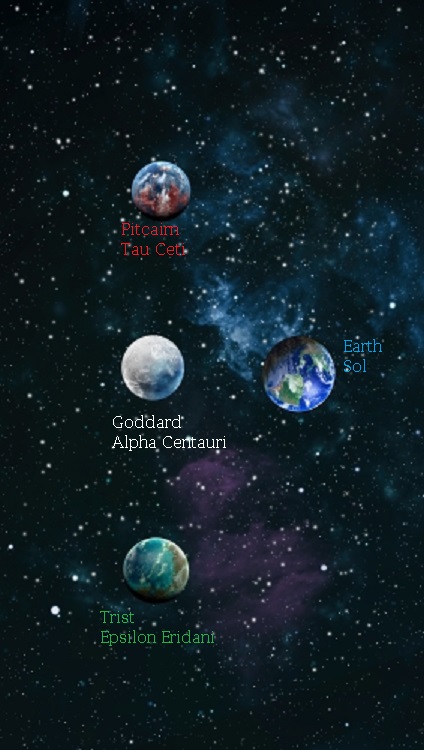Library Ship Saga Background

By the late twenty-first century, there were thousands of known planets in the galaxy, many of them nearby and often in promising orbits. Telescopes couldn’t do more than tell scientists that a planet could have liquid water and therefore could possibly support life. So, they sent the probes, tiny automated spacecraft powered by ion engines and accelerated to near light speed by the new Stenhouse technology. The probes exhausted their fuel accelerating to speeds never before attained, zipped through their target system, and used the star to whip them back on a course to Earth, sending their data ahead of them. In the space of a few decades, Earth learned about three planets around three nearby stars, all of which harbored primitive life.
With no sentient life of their own, these were planets ripe for the taking, so the colony ships followed the probes. They were huge ships, driven to near-light speed by the new Stenhouse drive, each carrying more than a hundred colonists. The voyage to Alpha Centauri took a grueling five years, but Tau Ceti and Epsilon Eridani, each about twelve light years from Earth, were much harder on the colonists. By the start of the twenty-second century, however, all three colonies were established.
Two hundred years later, the Epsilon Eridani and Alpha Centauri colonies struggled on planets that were marginally fit for mankind. The Pitcairn colony, orbiting Tau Ceti, fared better. Despite receiving new colonists and supplies only every twenty years, it grew and even thrived, a quiet planet where a few thousand people could live in peace.
A new supply ship is coming to Pitcairn. The colonists eagerly prepare for another rare contact with the mother world, but they have questions, too. This ship is different, and that difference will change their world and human civilization. It began with “A Ship from Earth.”
The Worlds of the Library Ships
The Library Ships
Three library ships were built to find new worlds for humanity. Lang was sent to Alpha Centauri and the ice world Goddard. Capek was sent to Epsilon Eridani and the planet Trist, a planet that would have been ideal if its life hadn’t exhaled chlorine. Asimov went to Tau Ceti and the planet Pitcairn, the most successful of the colonies.
Each library ship primary hull was a twelve-sided cylinder, rotating to simulate gravity. Each of the twelve four hundred thousand square foot decks and the hangar deck at the ship’s center had its own place in maintaining the ship.
Deck Descriptions



